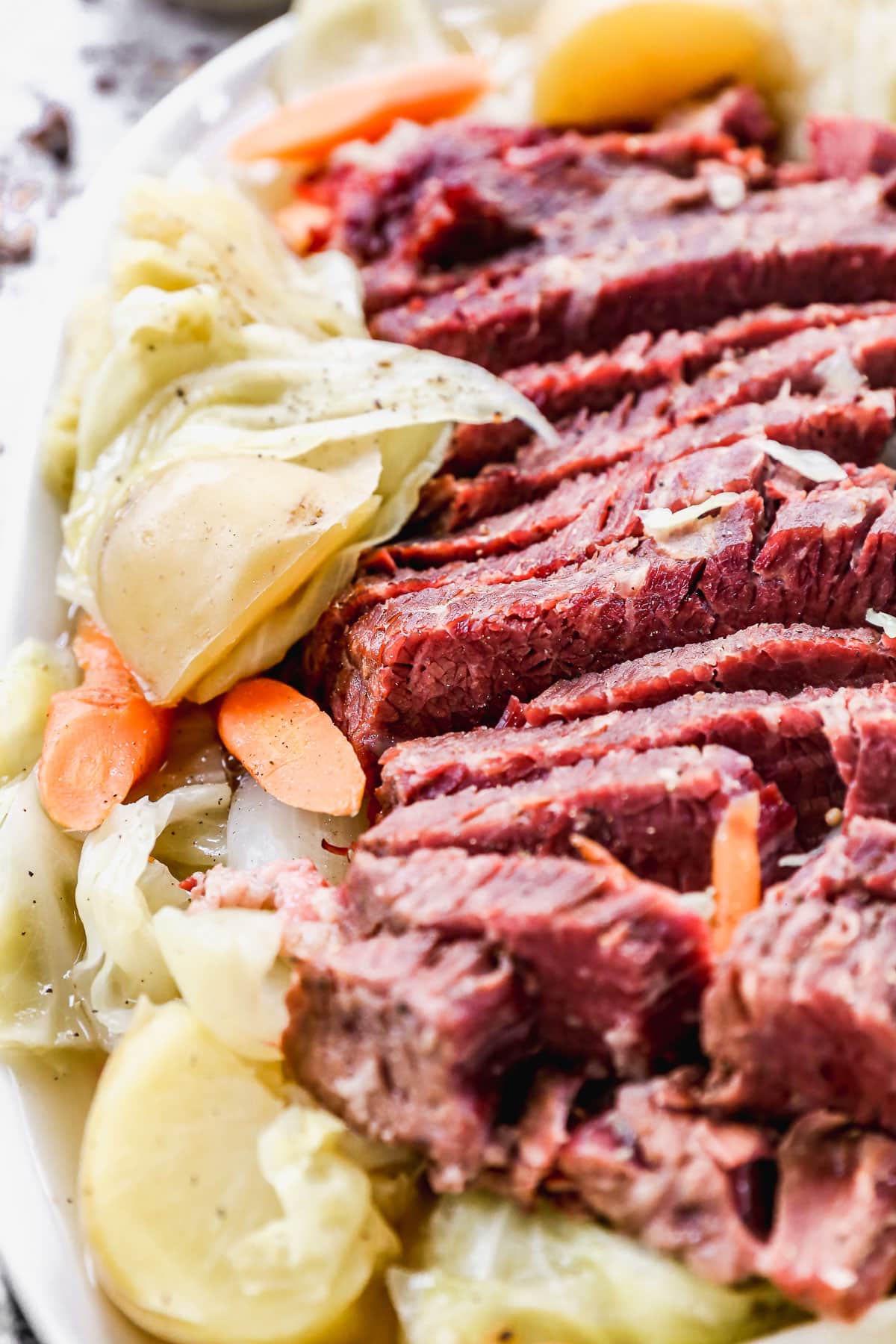The Ultimate Guide to Corned Beef: A Parent’s Ally for Quick and Nutritious Meals
Welcome to the wonderful world of corned beef, dear parents and guardians! If you’ve ever found yourself in a mealtime rut, wondering how to whip up something both delicious and nourishing for your bustling family, you’re in for a delightful surprise. In our comprehensive guide, we will unravel the mystery of corned beef and arm you with scrumptious recipes, nutrition facts, and creative ways to introduce this versatile protein into your family’s diet. So prepare to turn the ordinary into extraordinary with this timeless culinary classic!
What is Corned Beef?
Let’s start with a sprinkle of history. Corned beef, despite its name, has nothing to do with corn. The term “corned” actually comes from the large grains or “corns” of rock salt used in the curing process. This preservation technique dates back centuries, making corned beef a staple that has nourished generations. Primarily made from the brisket cut, which is located at the cow’s breast section beneath the first five ribs, this meat is salt-cured and often seasoned with various spices, boasting a distinctive, savory flavor.
Why Include Corned Beef in Your Family’s Diet?
Now, you might wonder why corned beef should earn a spot in your kitchen. Well, it’s packed with proteins, essential amino acids, vitamins, and minerals vital for your family’s growth and well-being. It’s particularly rich in vitamin B12 and iron, which are crucial for brain health and energy levels. Plus, its versatility lets you create a multitude of dishes that will tempt even the pickiest eater!
Is Corned Beef Really Nutritious?
Before you raise your eyebrows, let’s delve into the nutritious profile of corned beef. Yes, like any red meat, it should be consumed in moderation, but when enjoyed as part of a balanced diet, it can offer multiple health benefits. The key is understanding its nutritional content and the best ways to incorporate it into your meals. We will guide you through the nutritional breakdown and show you how to select the healthiest versions for your family table.
Buying, Storing, and Preparing Corned Beef Safely
Safety first! Before we jump into the fun part—recipes and cooking tips—it’s vital to cover the essentials of buying, storing, and preparing corned beef. You want your family to indulge in meals that are not only mouthwatering but also safe. We’ll share our top tips for selecting high-quality corned beef from your local grocer, how to properly store it to extend its shelf life, and the safest methods to prepare it while keeping its nutrition intact.
Creative and Kid-Friendly Corned Beef Recipes
If you think corned beef is just for St. Patrick’s Day, think again! We’re brimming with innovative and kid-approved corned beef recipes that are perfect for any day of the year. From traditional corned beef and cabbage to exciting twists like corned beef hash waffles, you’ll uncover a treasure trove of dishes that will capture your family’s hearts (and stomachs!).
Stay tuned as we dive deeper into each of these sections, providing valuable insights and answering all your corned beef queries. This guide is more than just another article; it’s your ticket to becoming a corned beef connoisseur, wielding the knowledge to delight your family with nutritious, lip-smacking meals. Let’s embark on this savory journey together!

5 Essential Tips for Preparing Corned Beef
Embarking on your corned beef adventure? Here are five things every parent should know about preparing corned beef:
- The Cut Matters: When shopping, you’ll typically find two cuts — the flat cut, which is leaner and offers a consistent thickness for even cooking, and the point cut, which is thicker, fattier, and often more flavorful. For tender results, look for a brisket with a good fat marbling.
- Rinsing is Recommended: Corned beef comes in a brine, which can be quite salty. To tame the saltiness, rinse the meat under cold water before cooking. This helps balance the flavor and ensures the salt doesn’t overpower the dish.
- Low and Slow Cooking: To achieve that fall-apart goodness, corned beef should be cooked at a low temperature for several hours. Whether you choose to braise it in the oven, simmer on the stovetop, or let it slow cook in a crockpot, patience is key to unlocking the full potential of its texture and taste.
- Grain is the Gain: Once cooked, always slice corned beef against the grain. This means cutting perpendicular to the muscle fibers, shortening them for a melt-in-your-mouth experience. Slicing with the grain can leave you with tough, chewy meat – not ideal for little ones.
- Innovative Pairings: Corned beef is not just for sandwiches. Pair it with a medley of roasted vegetables, fold it into scrambled eggs, or mix into casseroles. The unique flavor complements a variety of ingredients, adding a twist to family favorites and ensuring everyone finds something to love!
With these core principles in place, you’ll be well-equipped to turn corned beef into a regular star on your family’s dinner table. Now, let’s take a closer look at how corned beef can play a wholesome role in your meal plans.
Nutrition at a Glance
A 3-ounce serving of corned beef can serve as a significant protein source, clocking in at about 21 grams, which is essential for children’s growth and repair of body tissues. It also contains a healthy dose of vitamin B12 for brain health and iron for energy and focus. Since corned beef is low in fiber, accompany it with fiber-rich sides like fresh vegetables or whole grains. Balance is the name of the game!
A tip for health-conscious families: Opt for a lower-sodium variety if available, or simply soak the corned beef in water for an hour before cooking to further reduce its salt content.
Hitting the Grocery Aisle: Selecting Your Corned Beef
Ready to shop? Your mission is to hunt for quality corned beef with a vibrant red hue. Good color is often an indicator of freshness. Pre-packaged corned beef should have minimal liquid in the package, and the spice packet, which usually comes with it, should be intact. If you can’t find what you’re looking for pre-packaged, some butchers and delis offer freshly prepared corned beef – don’t hesitate to ask!
Remember, corned beef can stretch beyond one meal. Buy a slightly larger piece than necessary and plan for leftovers that can be stirred into soups, salads, or sandwiches for tomorrow’s lunch.
With this guide, you’re now primed to transform your weekly menu with the power of corned beef. Ready, set, cook up a storm!
For more great articles please see here. For more information see here
Disclaimer
The articles available via our website provide general information only and we strongly urge readers to exercise caution and conduct their own thorough research and fact-checking. The information presented should not be taken as absolute truth, and, to the maximum extent permitted by law, we will not be held liable for any inaccuracies or errors in the content. It is essential for individuals to independently verify and validate the information before making any decisions or taking any actions based on the articles.




